Abstract
OBJECTIVE--To develop a handicap measurement scale in a self completion questionnaire format, with scale weights allowing quantification of handicap at an interval level of measurement. DESIGN--Adaptation of the International Classification of Impairments, Disabilities and handicaps into a practical questionnaire incorporating the dimensions of handicap mobility, occupation, physical independence, social integration, orientation, and economic self sufficiency and scale weights derived from interviews with a general population sample, with the technique of conjoint analysis. SETTING--Two general practices in different areas of London. SUBJECTS--240 adults aged 55-74 years randomly selected from the practices, 101 (42%) of whom agreed to be interviewed, and 79 (78%) of whom completed the exercise. MAIN MEASURES--Rating of severity of handicap associated with 30 hypothetical health scenarios on a visual analogue scale, from which was derived a matrix of scale weights ("part utilities") relating to different levels of disadvantage on each dimension, with a formula for combining them into an overall handicap score. Severity scores measured directly for five scenarios not used to derive the scale weights were compared with those calculated from the formula to validate the model. RESULTS--The part utilities obtained conformed with the expected hierarchy for each dimension, confirming the validity of the method. The measured severities and those calculated from the formula for the five scenarios used to validate the model agreed closely (Pearson's r = 0.98, p = 0.0009; Kendall's tau = 1.00, p = 0.007). CONCLUSIONS--This interval level handicap measurement scale will be useful in assessing both specific therapies and health services, in clinical trials, in analyses of cost effectiveness, and in assessments of quality assurance.
Full text
PDF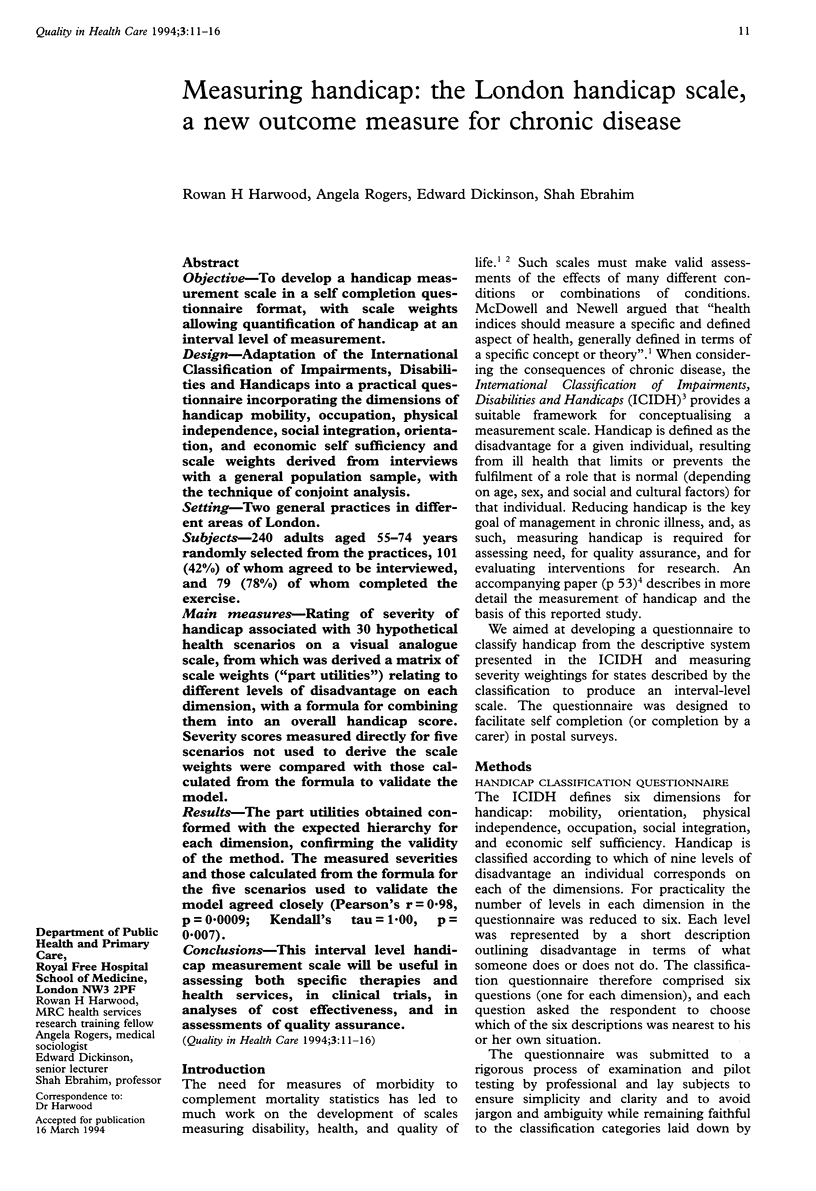
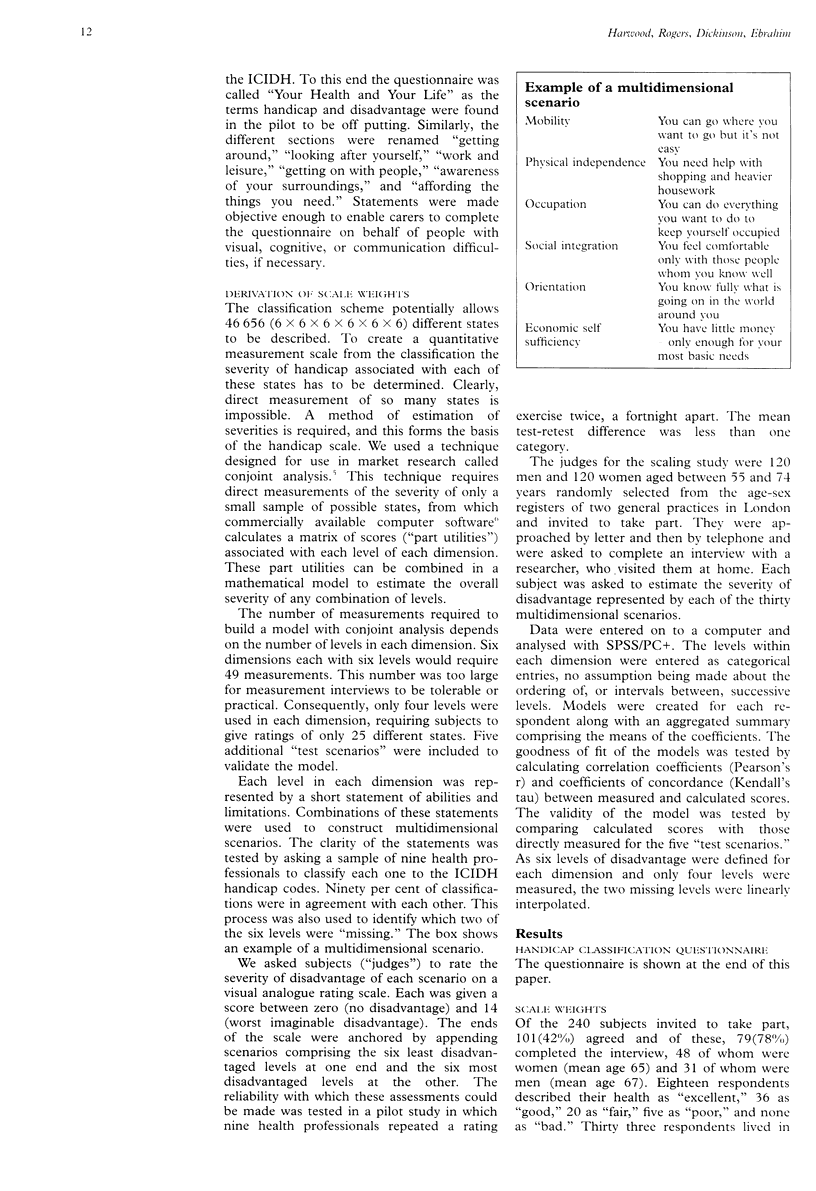
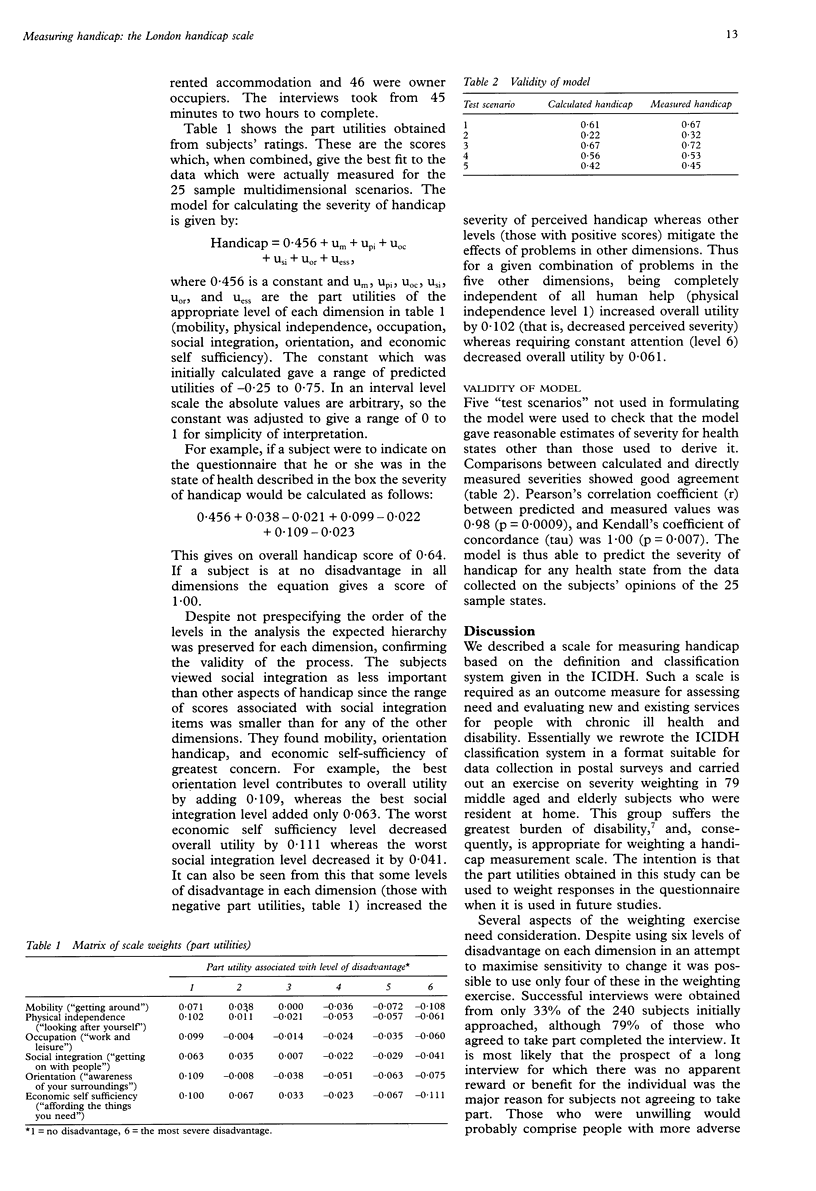
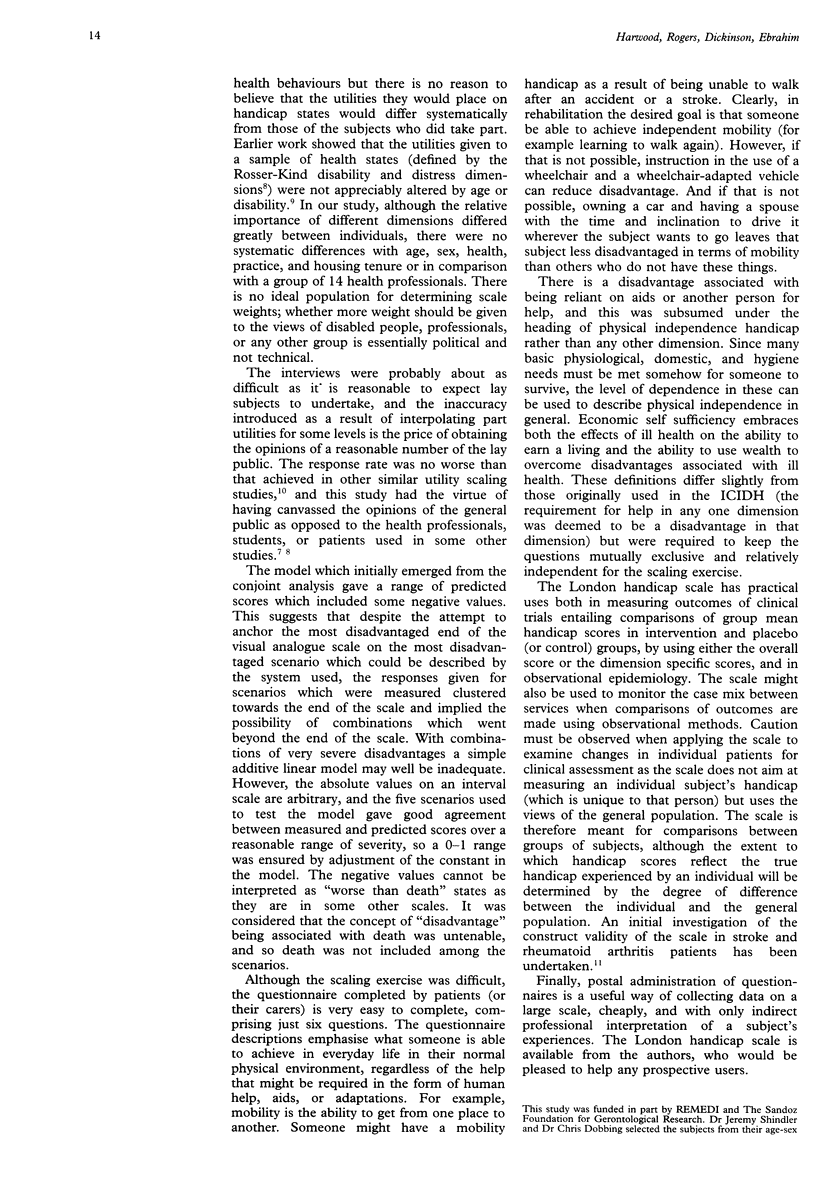

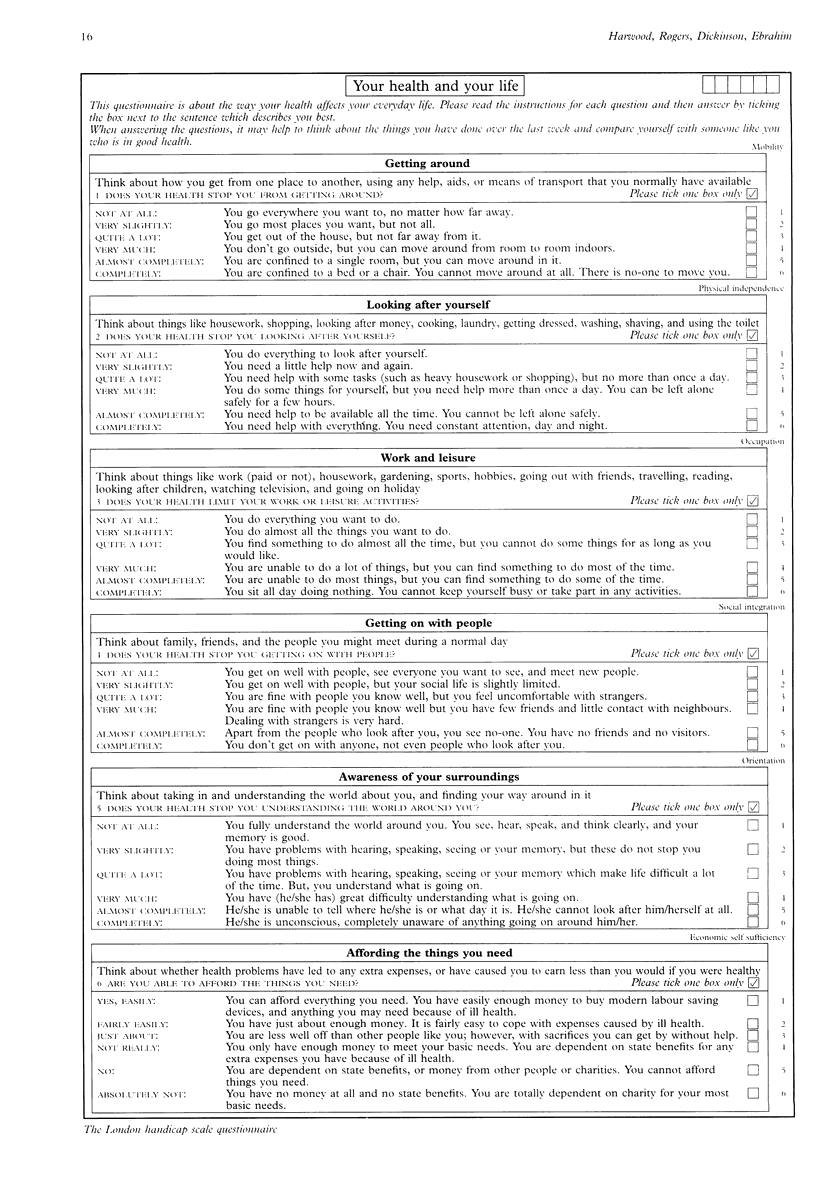
Selected References
These references are in PubMed. This may not be the complete list of references from this article.
- Ebrahim S., Brittis S., Wu A. The valuation of states of ill-health: the impact of age and disability. Age Ageing. 1991 Jan;20(1):37–40. doi: 10.1093/ageing/20.1.37. [DOI] [PubMed] [Google Scholar]
- Harwood R. H., Jitapunkul S., Dickinson E., Ebrahim S. Measuring handicap: motives, methods, and a model. Qual Health Care. 1994 Mar;3(1):53–57. doi: 10.1136/qshc.3.1.53. [DOI] [PMC free article] [PubMed] [Google Scholar]
- Rosser R., Kind P. A scale of valuations of states of illness: is there a social consensus? Int J Epidemiol. 1978 Dec;7(4):347–358. doi: 10.1093/ije/7.4.347. [DOI] [PubMed] [Google Scholar]
- Torrance G. W., Boyle M. H., Horwood S. P. Application of multi-attribute utility theory to measure social preferences for health states. Oper Res. 1982 Nov-Dec;30(6):1043–1069. doi: 10.1287/opre.30.6.1043. [DOI] [PubMed] [Google Scholar]


